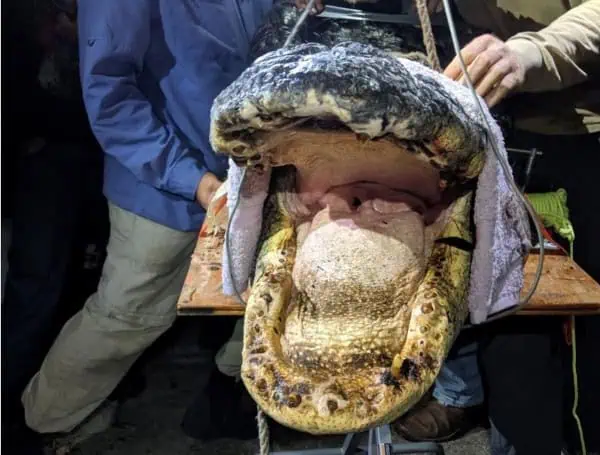New research from the University of Georgia’s Odum School of Ecology and Marine Extension and Georgia Sea Grant reveals a hidden danger lurking in the waterways of Georgia and South Carolina: elevated levels of mercury, a potent neurotoxin.
The findings, published in Environmental Toxicology and Chemistry, stem from a comprehensive study of alligators, suggesting a wider environmental contamination issue that could pose risks to human health.
UGA researchers, in an effort to understand the health of these apex predators, analyzed blood samples and diets of over 100 alligators from three distinct locations: the Okefenokee Swamp, Jekyll Island, and Yawkey Wildlife Center. The results were stark, particularly for alligators in the Okefenokee Swamp, where mercury levels were found to be eight times higher than in the other two research sites.
READ: Cattle Industry On High Alert As Screwworm Infestation Threatens U.S. Livestock, Beef Prices
“Mercury is a neurotoxin that is very lethal to organisms. If it builds up, it moves through the food web and creates the perfect storm,” stated Jeb Byers, co-author of the study and UGA Athletic Association Professor in the Odum School.
The study highlighted several troubling trends:
- Okefenokee Hotspot: Alligators in the Okefenokee Swamp exhibited significantly higher mercury concentrations (mean = 0.62 mg/kg) compared to their coastal counterparts.
- Accumulation with Age: Larger, older alligators showed more prominent mercury concentrations, indicating bioaccumulation over their lifespan.
- Inherited Contamination: Even smaller, young alligators and hatchlings appeared to have inherited mercury levels, suggesting early exposure.
- Human Risk: The researchers warn that humans who consume game or fish from these affected areas may be at risk for mercury contamination, as the heavy metal biomagnifies up the food chain.
The research also revealed that the presence of mercury isn’t solely confined to alligators.
“Now that we know this about one of the apex predators in these systems, we wonder what else is being affected?” remarked Kristen Zemaitis, lead author of the study and a graduate of the Odum School. She emphasized the critical need to identify the prominent sources of this contamination and assess its impact on other species within the ecosystem.
READ :FWC Warns: Stay Safe Around Florida Alligators As Mating Season Approaches
While mercury is a naturally occurring element, anthropogenic activities have drastically altered its spatial distribution, leading to regional “hotspots” with elevated concentrations.
The study, titled “Site-specific ontogenetic drivers of mercury concentrations in American alligators,” delves into how an organism’s development and habitat interact to shape individual mercury burdens, especially within and across species. The findings underscore that while environmental mercury concentrations are a primary driver, diet and body size also play a role in individual variation within alligator populations.
This research serves as a critical wake-up call, urging further investigation into the sources of mercury in these vital Southeast waterways and prompting a closer look at the potential health implications for both wildlife and human populations.
Please make a small donation to the Tampa Free Press to help sustain independent journalism. Your contribution enables us to continue delivering high-quality, local, and national news coverage.
Connect with us: Follow the Tampa Free Press on Facebook and Twitter for breaking news and updates.
Sign up: Subscribe to our free newsletter for a curated selection of top stories delivered straight to your inbox.
